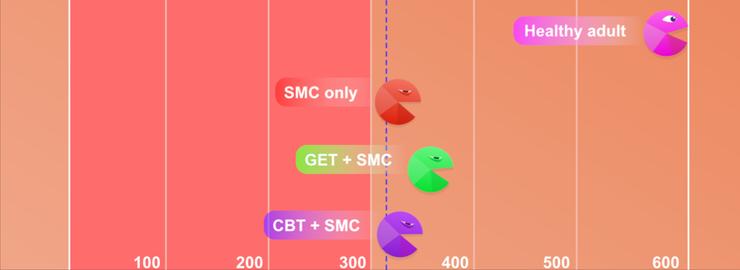This is team member Janelle's testimony to the CFSAC meeting in June 2012. (to contact Janelle, please click here.)
Hi, I’m Janelle Wiley. Nice to be with you by phone.
Last year in the UK there was a very large study on cognitive behavioural therapy (or CBT) and graded exercise therapy (GET) for ME/CFS: the PACE trial. CBT and GET are the same treatments listed as top treatments by CDC. ( one of the study authors is a consultant to CDC's ME/CFS division and studies by him and his colleagues are frequently cited by CDC.)
Spending over 5 million pounds (more than the usual entire NIH budget for ME/CFS for a year ) and enrolling 640 patients (possibly the biggest ME/CFS study ever), and setting out to determine the safety and efficacy of these two treatments most recommended by health authorities around the world, this study had the potential to be a capstone project.
What has been done with this opportunity?
First, let’s talk about safety. Tom Kindlon wrote a paper which was published in the Bulletin of the International CFS/ME Association (which is a peer-reviewed publication). This paper looked at harms reporting for CBT and GET in ME/CFS generally, and in the PACE trial specifically. One can readily find it by searching for something like "Tom Kindlon harms ME/CFS CBT". (1) In his paper, Tom reports that patients and therapists were both told to consider symptoms as related to re-conditioning--without any particular basis in science or research for doing so--and that this could lead to "priming" which could result in harms not being reported as such.
One interesting point is that, other than major things like hospitalization, to qualify as a serious adverse event, a deterioration disrupting activities of daily living had to last for four weeks to qualify as serious. So, do a bit of extra exercise, get a flare and get even sicker for two weeks (hey, this is ME/CFS--that can happen; this is why the surveys say GET makes us worse), and this ends up being a minor event to the study authors. And they said they wanted to see whether the surveys were right, yet if they meant to test this, they designed the study strangely.
Nearly everyone had at least one adverse event, but we aren’t told much because most of them are classed as non-serious by study guidelines. Tom writes, "given that this was a trial of non-pharmacologic therapies... on a group of individuals with an average age of less than 40... [with many conditions ruled out] and who were deemed capable of participating in an outpatient exercise program, more information... would have been desirable, particularly if they want to claim... that the interventions were 'safe'".
It's a great paper and I recommend that you read it all.
Second, let's talk about efficacy. A group of us with science and math backgrounds together looked at the study, and we've written an analysis: 'ME Analysis: Evaluating the results of the PACE study" and you can find it at evaluatingpace.phoenixrising.me/home.html. We found a number of very serious errors in the methodology and the analysis. For example, the distribution of fatigue scores on the fatigue survey they used, rather than making a nice bell curve, is what we call skewed, or unbalanced. Like with people's incomes, there's a clumping effect where most of the group is very similar, lumped together at the bottom, but one or a few less ill people (like one or a few more wealthy people) throw off the average. The PACE trial's calculations did not account for the clumping effect.
Also there was a problem with the definition. The PACE trial purported to study several definitions. But like David Tuller wrote in the New York Times, they did this by first making an Oxford-CFS group and then subgrouping it by various (sometimes debatable) other criteria. This is not the same as independently enrolling patients diagnosed with different definitions. (And by the way, we should be subgrouping and using Canadian or International Consensus Criteria for research.)
And there were other problems.
But even if you forget all of those details: the problems with targets, with definitions, with defining what is and what is not significant, and with what was and what was not reported; one overwhelming message (shown by the race animation on our website (2)) is clear – the only objective data chosen for release by the PACE authors shows very, very clearly that CBT and GET have no more relevance to ME/CFS than they do for any other illness (or probably, for that matter, for people in good health). CBT and GET are therapies which, like other treatments, can be effective on patients who meet certain diagnostic criteria: the diagnosis of ME/CFS is not such a criterion. It would be as wrong to assume that all ME/CFS patients should undertake CBT/GET as it would be to assume that all patients in a doctor's waiting room should be prescribed a six-month course of antibiotics. CBT and GET should not appear in a list of treatments for ME/CFS patients such as appears on the CDC website. There is no evidence that CBT and GET have any particular relevance to ME/CFS.
Thank you.
1. Kindlon, T. “Reporting of Harms Associated with Graded Exercise Therapy and Cognitive Behavioural Therapy in Myalgic Encephalomyelitis/Chronic Fatigue Syndrome.” Bulletin of the IACFS/ME, Fall 2011;19(2):59-111. www.iacfsme.org/LinkClick.aspx?fileticket=Rd2tIJ0oHqk%3D&tabid=501
2.

Legend: At the start of the trial, the average distance walked in six minutes by those who were assessed was 321 metres (shown on the diagram as a blue dotted line).
At the end of the year, 431 patients were assessed. The group that only had approximately 5 sessions of Specialist Medical Care increased their distance by 22 metres. Those that had CBT in addition to SMC did not manage any better. Those that had GET managed an extra 45 metres more than the SMC. group – a total of 67 metres improvement from their results at the start of the year.
A Slow PACE: That may sound good, but we have to remember three important facts. The first is that the GET group used walking as its main form of exercise, so these patients had been concentrating on walking for a year. The second is that a distance of less than 300 metres is not typically recorded for patients except when, for instance, they’ve just had a heart/lung transplant. And note that these participants had an average age of 38. Even after a year of practising walking, the GET group average was still below 400 metres. The third is that a low estimate of the distance that an average healthy adult should manage, allowing for the increased proportion of women patients in the trial, is at least 600 metres.
If approximately 1/3 of the GET group were ‘normal’ by the authors’ standards (and nearly as many in the CBT group), it seems there is either something very strange about how they define ‘normal’, or a large amount of deterioration hidden by the average figure, or both.
|



